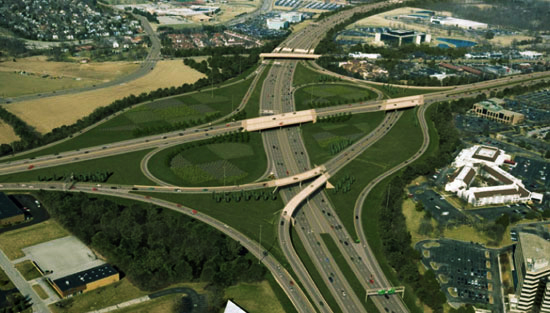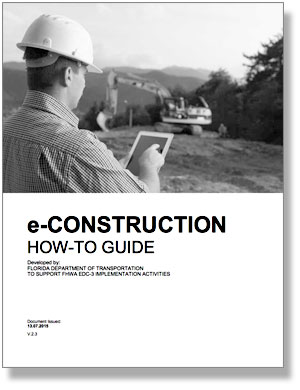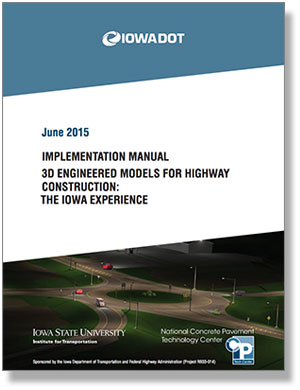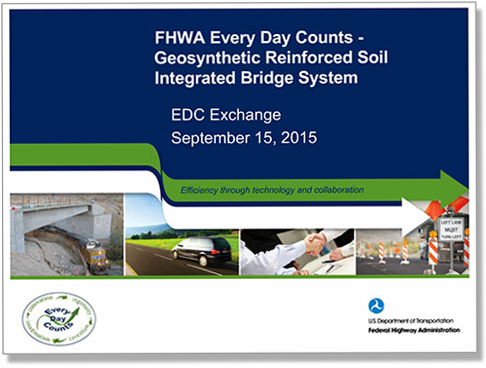September 17, 2015
Innovation of the Month: Data-Driven Safety Analysis
Predictive safety analysis can help transportation agencies estimate the safety performance of an existing or proposed roadway. Through the Every Day Counts effort on data-driven safety analysis, the Federal Highway Administration is encouraging agencies to take a closer look at predictive analysis.
Among the agencies using predictive analysis is the Ohio Department of Transportation, which applied the technique to estimate the expected performance of three alternatives for reconstructing the I-270 and U.S. 33 interchange in Dublin.
The analysis provided data that helped the agency choose a preferred alternative during the project’s engineering and design stage that addressed both traffic congestion and safety. Construction of the new interchange began in Spring 2015.
Check out these predictive analysis tools:
- FHWA’s Interactive Highway Safety Design Model is a suite of software analysis tools to evaluate the safety and operational effects of geometric design decisions on highways.
- AASHTOWare Safety Analyst software can be used to proactively determine which sites have the highest potential for safety improvement.

Predictive safety analysis helped the Ohio DOT choose an alternative for an interchange reconstruction
project. Credit: Ohio Department of Transportation
States Offer Resources on e-Construction and 3D Models

The Florida Department of Transportation’s new e-Construction How-To Guide helps highway agencies implement an e-Construction system.
Interactive courses—e-Construction Overview and Dealing With Obstacles—complement information in the guide.

The Iowa Department of Transportation’s 3D Engineered Models for Highway Construction: The Iowa Experience provides implementation details for highway agencies considering or in the process of switching to 3D engineered models.
The manual describes how Iowa uses 3D engineered models, from planning and surveying through design and construction.
View EDC Exchange on Geosynthetic Reinforced Soil-Integrated Bridge System
See the EDC Exchange: Geosynthetic Reinforced Soil-Integrated Bridge System webcast for information on this alternative for educing bridge construction time and cost. More than 500 people at 130 locations across the country participated in the September 15 exchange,part of a series of EDC Exchanges that combine presentations on innovations with in-person discussions involving representatives of state, local and tribal agencies. Hear case histories illustrating the range of projects and design considerations for implementing GRS-IBS. The webinar also provides an overview of FHWA guidance on scour evaluation and countermeasure design, as well as how to address scour successfully when using GRS-IBS.
Traffic Safety Topic of Arizona Media and Transportation Forum
Representatives of media, public safety and transportation organizations discussed cutting-edge transportation technology and getting drivers to their destinations safely at a forum sponsored by the Arizona Broadcasters Association and the AZTech regional traffic management partnership. The September 10 event was held at the Maricopa County Department of Transportation in Phoenix. The agenda included information on the AZTech Traffic Incident Management Coalition, formed as a result of an FHWA traffic incident management responder training workshop to share knowledge and best practices on incident management in the Phoenix area.
Utah Receives Award to Develop 3D Model Guidance
The Utah Department of Transportation will use a State Transportation Innovation Council Incentive award to develop a guide for using 3D engineered models as contractual project documents. The guide will incorporate lessons learned from three Utah projects using 3D engineered models, including a rural highway passing lane project in southern Utah, an urban arterial reconstruction and widening project in Salt Lake County and a rural highway widening project in central Utah. The projects will use the construction manager/general contractor delivery method to reduce risk.
Present at Ultra-High Performance Concrete Symposium
Transportation professionals are invited to submit abstracts by October 1 for presentations at the First International Interactive Symposium on Ultra-High Performance Concrete. The event–July 18-20, 2016, in Des Moines, Iowa–will provide a platform to share the latest developments in UHPC material, structural design, applications and opportunities. Abstracts and papers will be reviewed by the International Scientific Advisory Committee. Accepted papers will be included in the conference proceedings and authors will present their contributions at the symposium.



